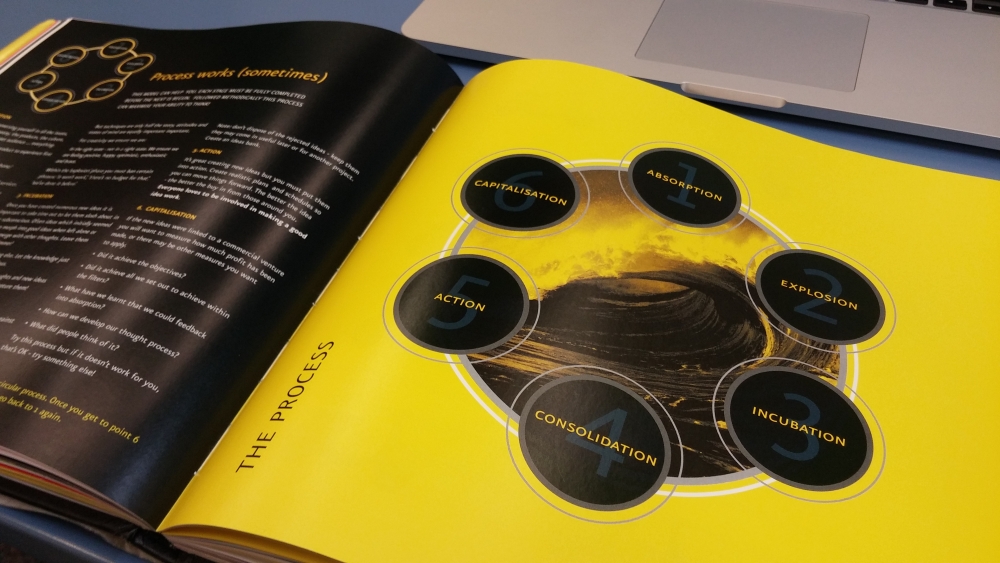Post based on the book Think! by Tina Catling and Mark Davies
“If you always do what you’ve always done you’ll always get what you’ve always got.”
The book starts with this great quote that is also very interestingly designed so it immediately sparks your interest to read it through.
How to be more creative?
Learn with exploring through books, radio stations, tv, comics, magazines, observing people, culture… practically all the sources of learning available to you immediately. Make sure you lean with a passion. Learn also from other people and ask them about their work.
We usually hold ourselves back and with that we restrain ourselves from being creative. Break out and do a thing you haven’t done for a long time. Allow yourself to be brave enough to think unique.
Plan your time for thinking and brainstorm. You can even play mind games or just randomly doodle to put your brain to work. The goal is to stretch your brain and learn from new experiences.
Colour your emotions. Look at red if you need more energy, at yellow if you need some uplifting, at blue if you are to stressed and you need to calm down, at white to make things seem less cluttered and at green if you need any fresh ideas.
Observe your surroundings carefully because even something like objects, images or words can spark an idea.
Techniques?
- mapping (basically brainstorming on a paper)
- relate (put yourself in your audience’s body)
- storytelling (everyone loves stories, even in business)
- share (share your ideas with others and discuss them)
The process that might help your ability to think.
1. Absorption: fully immerse yourself in all the issues (brand, company, target audience…), try the product yourself, mystery shop, visit competitors, talk to customers and stuff, understand the vision and make sure you have a market knowledge.
2. Explosion: generate new ideas, make sure you are feeling positive and ban negative thoughts about the project.
3. Incubation: don’t be afraid to let your ideas sit for the night, let the knowledge sink into your subconscious and you will see that new ideas will simply spark in your mind.
4. Consolidation: reflect on your work and do a reality check, filter your ideas.
5. Action: put ideas into action and create realistic plans and schedules so you can move things forward.
6. Capitalisation: ask yourself if the project achieved the objectives, what you’ve learnt and what can you improve.
“Everyone has the capacity to be creative, you may have just forgotten how to do it.”
You can get this book here:



